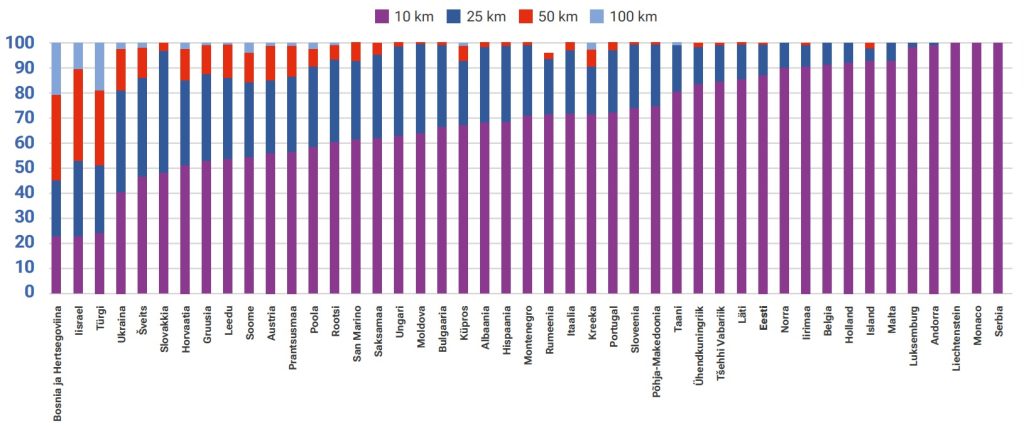Report: Mobile internet is cheap in Estonia, but prices of fixed line connections are high compared to neighbouring countries
Estonian communications services have good coverage and are fast by international standards, and mobile internet is affordable and very competitive internationally. However, cable connection prices are high compared to neighbouring countries, especially for very fast connections, according to the Foresight Centre’s recent report “Trends and Competitiveness in the Electronic Communications Sector”.

Uku Varblane, head of research at the Foresight Centre, explained that the affordability of mobile internet relies on competition. “The price of mobile internet is relatively affordable thanks to the stiff competition between three large telecom companies,” said Varblane. “However, a fibre optic network development requires volume and achieving lower prices is difficult because service providers often also control the end-user’s connection point and cable, which limits operator change.” He added that the market for fixed line connections is small in Estonia and not commercially attractive outside densely populated areas.
In addition, Estonia has disproportionate and unjustified requirements for building communications networks, which make investing in infrastructure costly. “As an example, there is the requirement to install a fibre optic cable two metres deep or to add an additional protective tube around a cable that is already enclosed in a protective tube,” said Varblane.
The Foresight Centre notes in its short report that competitiveness in the Estonian communications services sector could be improved if taking communications infrastructure into account would be made a standard part and legal requirement in all construction projects, including road construction. The operator-neutral internet networks could change the situation as well if installed together with electrical cables.
Varblane pointed out that municipalities’ and landowners’ greater awareness about modern communications would also help avoid unjustified requirements in communication networks construction. “Apartment associations and other landowners could build their own in-house fibre optic networks,” said Varblane. “This would open up more options for residents and businesses when choosing their service providers, which would help lower the prices of fixed line connections.”
Despite the targeted destruction of communication cables in the Baltic Sea, there are a good number of external connections available in Estonia, and this has allowed businesses and residents to have uninterrupted communication services. According to the Foresight Centre, sea routes are still the best solution for intercontinental connections, and repairing them is many times cheaper than installing new cables.
Compared to the European average, fibre optic network coverage is high (86%) in Estonia, and most buildings that are not yet connected to fibre optic cable are located less than 10 kilometres from a base network. However, in terms of fixed-location fixed line connection speeds, Estonia ranks 66th among 154 countries, remaining below its capacity, i.e. the networks would allow for higher connection speeds than is actually in use.
In the comparison of mobile internet speeds, Estonia ranks 24th in the world among 102 countries compared, with most European countries lagging behind Estonia.
The short report “Trends and Competitiveness in the Electronic Communications Sector” (in Estonian) is based on the chapter “Electronic Communications as a Factor of Competitiveness of the Estonian Economy” (author M. Vallimäe) of the report by the Competitiveness Expert Council and has been prepared within the framework of the research stream “The Future of Economic Competitiveness”. The research stream analyses the future prospects, opportunities and obstacles of the Estonian economy and presents promising economic policy recommendations. The research stream is part of the work of the Competitiveness Expert Council established at the Economic Affairs Committee of the Riigikogu.
Latest news
-
10.11 2025Report: Estonia could learn how to control healthcare costs from the Netherlands
The expenses of the Estonian Health Insurance Fund significantly exceed its revenues, and the accumulated reserves will be depleted in the next five years. Other European countries in the same situation have cut healthcare services and increased people’s co-payments. According to the Foresight Centre’s new short report “Other countries’ experiences in managing healthcare budget deficits”, both solutions have worsened public health and deepened inequality.

 An independent think tank at the Riigikogu
An independent think tank at the Riigikogu